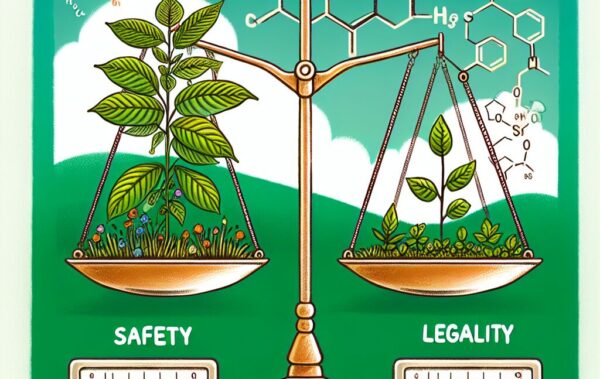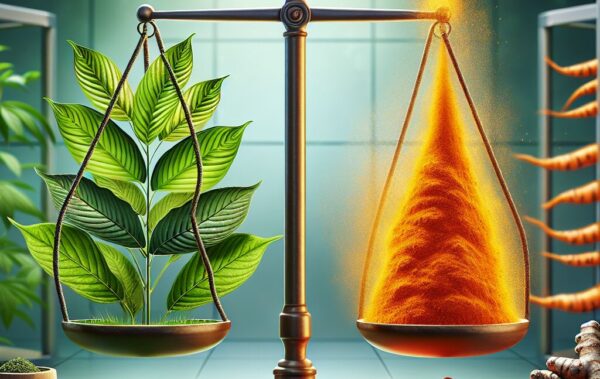.container {max-width: 1200px;}
- Understanding kratom and traditional teas
- Health benefits and potential risks
- Usage and preparation methods
- Cultural significance and history
- Legal status and availability
Kratom, derived from the Mitragyna speciosa tree, a tropical evergreen native to Southeast Asia, has garnered considerable interest as a unique herbal supplement. Traditional teas, such as green tea, black tea, and herbal infusions, have long been a staple in many cultures around the world. While both kratom and traditional teas offer their own sets of benefits, their use and effects can differ significantly, making it important to understand each in the context of everyday use.
The leaves of the kratom tree contain various alkaloids, the most prominent of which are mitragynine and 7-hydroxymitragynine. These compounds interact with the body in ways that can potentially influence mood and energy levels. Unlike traditional teas, kratom is often used for its unique properties, which some users report as delivering a subtle stimulant effect at low doses and a more sedative effect at higher doses. It’s worth noting that the effects of kratom can vary widely depending on the strain and form in which it is consumed. For instance, users might opt for kratom powder or kratom capsules depending on their preference for convenience and taste.
Conversely, traditional teas can be categorized into several types, such as green tea, black tea, oolong tea, and various herbal teas—each possessing its unique flavor profile and array of benefits. Green tea, for instance, is renowned for its high antioxidant content and potential metabolism-boosting properties. Black tea, richer in caffeine, is often utilized for its robust flavor and potential to enhance alertness. Herbal teas, including chamomile, peppermint, and hibiscus, are cherished for their calming and aromatic qualities, frequently employed as part of a holistic approach to wellness.
Between kratom and traditional teas, the preparation methods can also vary widely. For traditional teas, hot water extraction is the common method, allowing the infusion of beneficial compounds into the beverage. In contrast, kratom can be consumed in several forms, including direct ingestion of powder, encapsulated forms, or even specialized products like kratom tea bags which offer a more convenient way of brewing kratom as a part of daily routine.
In the realm of herbal consumption, beverage choices reflect not just personal preferences but also the intended use and desired outcomes. Kratom’s distinctive profile and traditional teas’ diverse selection offer multiple avenues for incorporating these beverages into everyday life, catering to different health goals and lifestyle needs. While traditional teas are often consumed for their refreshing taste and health benefits, kratom’s unique properties make it a choice for those seeking specific effects, such as mood enhancement or relaxation.
Combining the knowledge of how these herbal drinks affect the body and mind within their own right reveals the potential each holds within a balanced lifestyle. Whether your beverage choice aims to boost your energy, calm your nerves, or simply offer a moment of relaxation in a busy day, understanding the properties of kratom and traditional teas can help tailor your consumption to meet your needs.
Health benefits and potential risks
When weighing the health benefits and potential risks of kratom versus traditional teas, it’s essential to consider both the anecdotal and scientific evidence available. Both kratom and traditional teas have a history of use for promoting well-being, albeit in different contexts and with differing effects.
Kratom’s Health Benefits:
Kratom is often praised for its multifaceted impact on the body. Low doses of kratom are frequently associated with stimulating effects, which can potentially enhance focus, provide an energy boost, and improve overall mood. The alkaloids in kratom, particularly mitragynine, have been reported to interact with the numerous receptors in the brain that can influence one’s psychological state. Higher doses, on the other hand, tend to elicit sedative effects, making it a popular choice among users looking to alleviate stress or manage feelings of discomfort. This versatility in effects has made kratom a popular alternative for those seeking to enhance their everyday use experience.
- Potential for mood enhancement
- Alleviation of discomfort at higher doses
- Energy boost and focus enhancement at lower doses
Despite these benefits, it is crucial to note that kratom is not without its risks. Regular or high-dose use of kratom has been linked to potential side effects such as nausea, constipation, and, in rare cases, dependency. Therefore, it’s advised to approach kratom consumption responsibly, starting with low doses, and monitoring one’s body’s response.
Traditional Teas’ Health Benefits:
Traditional teas, ranging from green tea to chamomile, offer a wide array of health benefits. Green tea, for instance, is high in antioxidants, particularly catechins, which are known for supporting heart health, boosting metabolism, and even having potential anti-carcinogenic properties. Black tea, with its higher caffeine content, can enhance mental alertness and possibly improve gut health due to its unique combination of compounds. Herbal teas, like chamomile and peppermint, are often chosen for their calming effects and digestive support, respectively.
- Rich in antioxidants (green tea)
- Potential metabolism booster
- Mental alertness and gut health support (black tea)
- Calming and digestive benefits (herbal teas)
However, even traditional teas have their considerations. High consumption of caffeine-containing teas can lead to issues such as insomnia, jitteriness, and increased heart rate. Additionally, overconsumption of certain herbal teas might interact with medications or cause adverse effects in some individuals.
Comparing the Two:
When comparing kratom and traditional teas, it becomes evident that both possess unique benefits and risks that cater to different needs and preferences. For those seeking an herbal supplement that offers both stimulating and sedative properties, kratom might be appealing, especially in its versatile forms like kratom powder or kratom capsules. Traditional teas, on the other hand, cater broadly to wellness goals through their diverse range of herbs and brews.
A well-rounded approach to herbal consumption might involve integrating both kratom and traditional teas into one’s routine, carefully balancing the use depending on the day’s needs and activities. For instance, starting the day with a cup of invigorating green tea and opting for a kratom-infused tea in the late afternoon for a balanced burst of energy could offer a harmonious blend of benefits.
Understanding the unique properties of kratom and traditional teas, along with their potential risks, can help make informed choices that contribute positively to one’s everyday use and holistic wellness. It’s always recommended to consult with a healthcare professional when introducing new supplements to ensure they align with personal health needs and conditions.
Usage and preparation methods
For newcomers to kratom or tea enthusiasts looking to broaden their horizons, knowing how to prepare these beverages effectively can greatly enhance the experience. Traditional teas are typically straightforward in preparation; hot water and steeping times usually suffice. Kratom, however, offers a bit more variety in terms of preparation and consumption methods, making it a unique addition to one’s daily routine.
Let’s start by examining the preparation of traditional teas. Depending on the type—green, black, oolong, or herbal—the steeping time and water temperature can vary. Green tea usually requires lower temperature water (around 175°F) and a steeping time of 2 to 3 minutes to prevent bitterness. Black tea, on the other hand, thrives in boiling water (212°F) with a steeping time of around 4 to 5 minutes for a fuller flavor. Herbal teas can be more forgiving, with a typical steeping time ranging from 5 to 10 minutes, depending on the desired strength and taste.
Kratom, on the other hand, offers diverse ways of consumption, each catering to different preferences for taste and convenience:
- Kratom Powder: This is the most versatile form. Many choose to mix kratom powder with water or fruit juice to mask the bitter taste. Another approach is brewing kratom tea by simmering the powder in hot water and then straining the liquid.
- Kratom Capsules: For those who prefer a hassle-free method without the bitterness, capsules offer a convenient and portable option (Kratom capsules).
- Kratom Tea Bags: These combine the best of both worlds, offering ease of preparation while providing a more pleasant taste experience. Simply steep the tea bag in hot water, just like traditional tea (Kratom tea bags).
- Kratom Extracts: These are concentrated forms that can be added to beverages or taken directly. They provide a stronger effect, suitable for experienced users.
For those incorporating kratom into their daily regimens, it’s essential to experiment with different strains and preparation methods to determine what best aligns with their needs and lifestyle. From managing energy levels to promoting relaxation, kratom and traditional teas can offer a diverse range of benefits.
| Preparation Method | Description |
|---|---|
| Green Tea | Steep at 175°F for 2-3 minutes |
| Black Tea | Steep at 212°F for 4-5 minutes |
| Kratom Powder | Mix with water/juice or brew in hot water |
| Kratom Tea Bags | Steep in hot water for a convenient beverage |
| Kratom Capsules | Take directly with water, suitable for on-the-go |
Understanding the various methods of preparation not only enhances the enjoyment of these herbal beverages but also maximizes their potential benefits. Whether it is the ritual of brewing traditional tea or the versatile preparation of kratom, each option provides unique ways to enrich one’s daily routine.
Cultural significance and history
 Kratom and traditional teas have deep cultural roots that stretch back centuries, each with their own unique stories and roles in societal rituals, medicinal uses, and daily life.
Kratom and traditional teas have deep cultural roots that stretch back centuries, each with their own unique stories and roles in societal rituals, medicinal uses, and daily life.
Kratom, primarily used in Southeast Asia for its energizing and analgesic properties, holds significant cultural importance in countries like Thailand, Indonesia, and Malaysia. Historically, manual laborers would chew fresh kratom leaves to ward off fatigue during long workdays. In these regions, kratom was often consumed in social settings, akin to how coffee is enjoyed in Western cultures, fostering a strong sense of community and tradition around its use.
Interestingly, kratom leaves were also employed in traditional medicine practices. They were used to ease pain, mitigate withdrawal from opium, and even serve in spiritual ceremonies. In rural areas, kratom use was often interwoven with local folklore, where it was regarded as a natural remedy passed down through generations. The cultural landscape surrounding kratom, therefore, is rich with practices that highlight its integral role in daily life.
On the other hand, tea, with its origins tracing back to ancient China, boasts a far-reaching impact across various civilizations. The discovery of tea is attributed to Emperor Shen Nong in 2737 BCE, where it initially functioned as a medicinal beverage. Over time, tea drinking became an elaborate cultural practice, particularly with the advent of the Chinese tea ceremony and later the Japanese Chado (the Way of Tea). These ceremonies emphasize mindfulness, artistry, and the philosophical aspects of tea consumption, encapsulating the serenity and mindfulness inherent to the practice.
In the West, tea made its mark through colonial trade, eventually becoming a staple in British culture. The British East India Company played a crucial role in embedding tea into daily life, leading to iconic traditions such as afternoon tea. The cultural significance of tea in various societies has led to its embodiment of values such as hospitality, relaxation, and social bonding.
Comparing the cultural narratives of kratom and traditional teas, it’s evident that both hold immense historical significance and have adapted to contemporary lifestyles in fascinating ways. While traditional teas like green and black tea are globally recognized for their role in social and ceremonial contexts, kratom remains a potent symbol of traditional herbal practices and natural remedies in Southeast Asia.
Today’s global marketplace offers numerous options to incorporate these historic beverages into our modern routines. Products such as kratom tea bags or kratom capsules make it easier to enjoy kratom without the traditional preparation methods. Similarly, traditional teas have evolved with innovations like tea bags and ready-to-drink bottled beverages, ensuring their ease of integration into modern busy lives.
The enduring cultural importance of both kratom and traditional teas highlights their versatility and relevance even in today’s fast-paced world. Whether through the communal and ritualistic aspects of tea ceremonies or the traditional and medicinal uses of kratom, these beverages continue to be treasured not only for their health benefits but also for their deep cultural roots.
In sum, the cultural significance and history of kratom and traditional teas provide a rich backdrop that enhances our appreciation of these beverages in everyday use. Whether one leans toward the calming rituals associated with traditional teas or is intrigued by the vigor and ancient medicinal use of kratom, both offer unique pathways to explore holistic wellness through herbal consumption and thoughtful beverage choices.
Legal status and availability
Navigating the legal landscape for both kratom and traditional teas can be quite nuanced, depending on where you reside. Unlike traditional teas, kratom finds itself under a more scrutinized lens globally.
In many Southeast Asian countries where kratom is indigenous, such as Thailand and Malaysia, its legal status has fluctuated over the years. Historically, these countries employed strict regulations due to safety concerns and the potential for abuse. For instance, Thailand had long-standing bans on kratom, which only recently have started to relax, allowing for controlled medicinal and regulated adult use. Indonesia, on the other hand, remains a major exporter of kratom, serving as a key source for international markets, even though domestic use is somewhat restricted.
The United States presents a varied legal tapestry regarding kratom. Federally, kratom is legal, though the Food and Drug Administration (FDA) has raised significant concerns about its safety and efficacy. However, individual states and localities can enforce their own regulations, leading to a patchwork of legality across the country. States like Alabama, Arkansas, and Vermont have banned kratom completely, while others like Illinois and New York have city-specific restrictions. For those looking to purchase kratom in areas where it is legal, options abound through online marketplaces such as our kratom shop, offering products ranging from kratom powder to kratom capsules.
Conversely, traditional teas such as green tea, black tea, and herbal infusions enjoy a far more universally accepted legal status. These teas are freely available worldwide and are governed by general food safety regulations rather than specific legal scrutiny. The unrestricted nature of traditional teas makes them an easily accessible option for those looking to enhance their daily routines through herbal consumption.
Understanding the availability:
- Ease of Purchase: In regions where kratom is legal, it is readily available through both online platforms and physical stores specializing in herbal products. Traditional teas are ubiquitously available in grocery stores, tea shops, and online.
- Regulatory Requirements: Kratom often comes with more stringent regulatory requirements due to its potential for abuse and varying safety profiles. Traditional teas are generally regulated as food items, ensuring they meet safety and quality standards but without the complexities of kratom’s oversight.
- Quality Assurance: When purchasing kratom, particularly online, it is advised to seek out reputable suppliers who provide third-party testing results to ensure purity and safety. Traditional teas, while less complex in terms of regulations, can also benefit from quality assurances through recognized certifications (e.g., organic, fair trade).
Whether you are inclined towards the energizing effects of kratom or the calming aspects of traditional teas, understanding the legal implications and availability in your region is crucial. For those in search of reliable kratom products, platforms like our kratom product catalog can provide a diverse array of options, from kratom tea bags to potent kratom extracts.
The complexities surrounding the legal status of kratom highlight the importance of staying informed and abiding by local regulations. This ensures not only compliance with laws but also personal safety and well-being. Meanwhile, the widespread acceptance of traditional teas underscores their historical and cultural integration into everyday life, reflecting their enduring appeal and accessibility.









